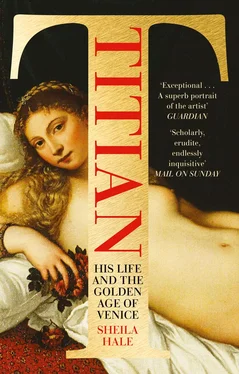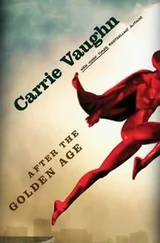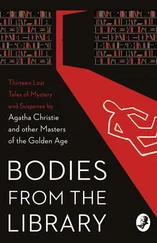1 ...7 8 9 11 12 13 ...17 Bembo and the Latin poet and patrician Andrea Navagero were among the founding members of the Aldine Academy, where meetings conducted in Greek were attended by learned members of the ducal chancery, some of whom worked part time for the press. But Aldo took his logo, an anchor intertwined with a dolphin, from an illustration in his first book in Italian, which he hoped would be a bestseller. The Hypnerotomachia Polifili (The Dream of Polifilo) is a coffee-table-sized book by Francesco Colonna, a Dominican monk from Treviso, which was published in 1499. Set in the Veneto in the 1460s and illustrated with 174 superb woodcuts, some explicitly erotic, the Hypnerotomachia is a weird stream-of-consciousness novel revolving around a passionate love story between Polifilus and Polia. Full of digressions, codes, riddles, bizarre episodes and passages in obscure ancient languages, it may have been intended, or partly intended, as a satire of pedantic humanism. (A favourite joke of one Venetian senator was to dismiss long-winded verbiage as ‘words of Polifilo’.) Although the first edition seems not to have been a commercial success the author’s obsessions with architecture, gardens and above all sex (in one episode Polifilo makes love to a building, to their mutual satisfaction) had an impact on Renaissance thinking,18 and the woodcut of the naked, reclining Venus, who blesses the love of Polifilo and Polia, anticipates the naked Venuses that became familiar subjects of Venetian painting.19
Venus, the incomparably beautiful goddess of sex and the third brightest planet in the night sky after the sun and the moon, was inextricably interwoven with the legendary foundation of Venice. Like Venice she had been born from the sea, and, so the poets liked to say, she gave her name to the city. She was usually portrayed naked – and never more enticingly than by Titian – or was used as an excuse for paintings of naked women that bore none of her attributes. The classical sources are confused about whether to condemn her nudity as that of a serial adulteress and founding mother of prostitution or to approve of it as representing the unadorned truth, either about the joys of uninhibited sexual love or about the higher, purer and more enduring love that follows marriage. Plato, in the Symposium, had resolved the dilemma by positing two Venuses, one heavenly and chaste, the other earthly and lustful. So she became, as well as the patron goddess of virginal Venice, the patroness of both whores and brides. The dualism, well suited to the Venetian predilection for having things both ways, reflected an ambivalent attitude to sex. Physical beauty was celebrated and its sexual consequences condoned by the intellectual elite. According to the medical wisdom of the day passionate sex leading to simultaneous orgasm produced the best babies. But the science, as it was thought to be, clashed with a deep-seated fear of sex outside marriage, which upsets the order of society, and with the teaching of the Church, which dictated that passion should be reserved for the worship of God.
Nevertheless, in a port city frequented by tourists, foreign merchants and pilgrims on their way to the Holy Land, who often had to wait for a month or more for the tide to carry their galleys on their ongoing journeys, prostitution flourished. From the middle of the fourteenth century the government had decreed that prostitutes were entirely necessary to the state and founded a public brothel near the Rialto. Prostitution soon employed a significant proportion of the population – if we include pimps, innkeepers and servants as well as the whores themselves.20 Most street prostitutes were poor young working-class women for whom the oldest profession was more profitable than domestic service or making sails for the arsenal for a salary of twelve ducats a year. But some went about so well dressed that they were confused with respectable ladies. Occasional legislation to force them to wear distinguishing marks, to ban soliciting on the streets or from gondolas and to forbid cross-dressing, a favourite technique of seduction, was half-heartedly enforced by a government that was concerned less with moral questions than with protecting its own members from syphilis, the ‘French disease’ that had invaded Italy with the armies of Charles VIII. ‘Our praiseworthy prostitutes’,21 as a frank official called them, were recognized as a necessary outlet for bachelors, good for the tourist trade and a douceur that could be offered to visiting dignitaries. Red-light districts were under the control of the state, and there was no move towards suppressing a – possibly tongue-in-cheek – tariff of whores printed in 1535 that gave the names, addresses, prices and specialities of 110 prostitutes. Prostitution, however, is always a dangerous job, and women who took money for sex had no recourse to the law if they were hurt or maimed. Angela Zaffeta, the most beautiful courtesan in Venice, was, according to a pornographic fantasy written in the early 1530s,22 taken to an island in the lagoon and raped by a succession of patricians in order of their social position.
The distinction between common whores and high-class courtesans – some of the latter educated and talented women kept by rich men – was first established at about the time Titian was making his name as a young painter. The most successful courtesans dressed and decorated their houses in the same fashion as wealthy married women. Some had been brought to Venice by their fading prostitute mothers from less sexually tolerant cities. Some were talented singers, actresses or poets. A few came from respectable Venetian families. Some courtesans became the long-standing mistresses of married noblemen. Marin Sanudo recorded a wedding between a widowed nobleman and a certain Cornelia Grifo, ‘a most beautiful and sumptuous widowed prostitute’:
She is rich and has been publicly kept by Ser Ziprian Malipiero, and for a while she belonged to Ser Piero da Molin dal Banco, and to others, who have given her a dowry of [blank] thousand ducats. The wedding was held at the monastery of San Zuan on Torcello and has cast great shame on the Venetian patriciate.23
Shortly after that the Council of Ten, one of the most powerful of the government committees, clamped down on such intrusions into the patrician bloodline with a law requiring the registration of all noble marriages within one month of the ceremony.
Prostitutes and courtesans nevertheless continued to serve the needs of the large percentage of Venetian men who remained unmarried. The population, which had tripled in the previous hundred years, was also proportionately younger, but competition for wives was intense, and men rarely married until they had inherited from their parents or established careers, by which time they were likely to be at least in their forties. Until the Counter-Reformation marriage was a secular arrangement, not celebrated in church but established by contract between families whose only considerations were financial and social. Those able to provide a daughter with a large dowry could be selective about the social status and wealth of the groom. But dowry inflation, which was rampant throughout the sixteenth century, meant that even well-off families could not necessarily afford to marry more than one daughter. It was a problem for all Venetian fathers who hoped to marry their daughters well, one that the Senate tried to control in the case of patrician families because it transferred a high proportion of their wealth, which might otherwise have been spent on investment and mercantile activity, to daughters, who were sometimes left so dowry-rich after the deaths of their husbands that they were in a position to lend back to their brothers and fathers.
Unmarried girls, who were on the shelf by twenty-five at most, were often placed in convents, some of which had reputations as high-class bordellos. Titian’s friend Pietro Aretino, who occasionally wrote pornography, described a convent24 where the abbess presided over group orgies, the walls were frescoed with erotic scenes, and the nuns were pleasured by lusty young friars and supplied with baskets of dildos made of the finest Murano glass. Although this was, of course, another fantasy (and was deliberately set not in Venice but in Rome), young nuns, often with the support of their families, did resist attempts to curtail their freedom of behaviour. One disapproving member of government identified more than fifteen convent-brothels, and recommended burning them to the ground along with the nuns, ‘for the sake of the Venetian State’.25
Читать дальше












